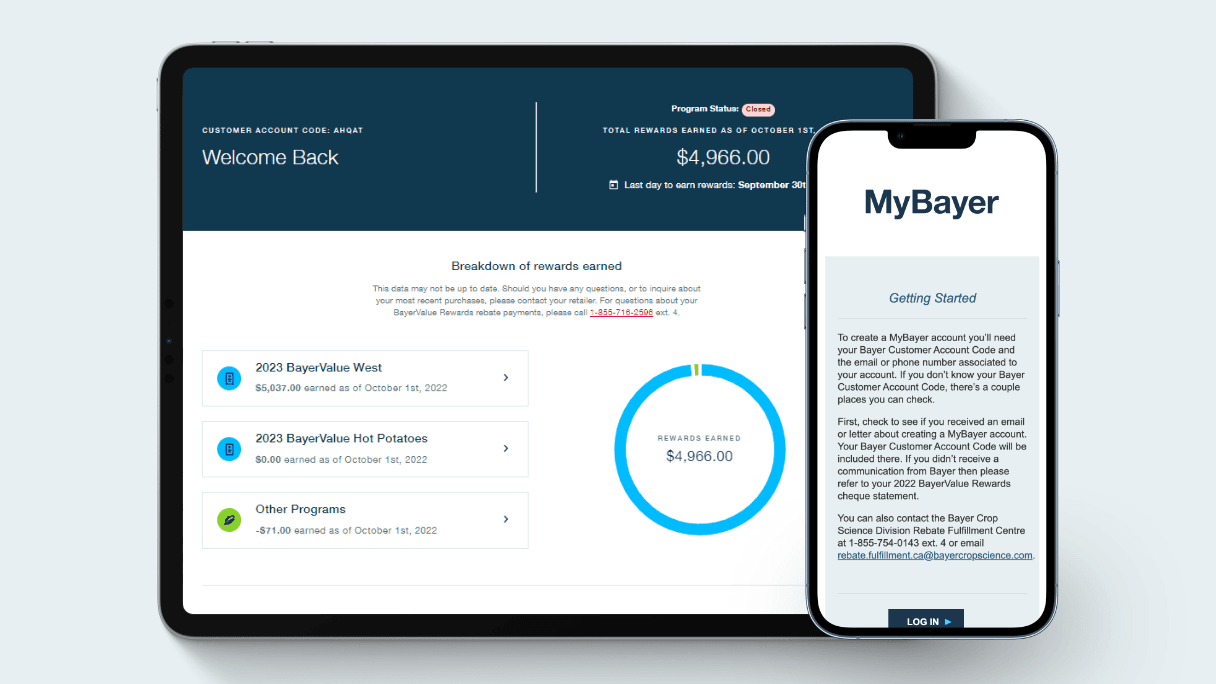Understanding the canola futures market
November 14, 2024
If you grow canola and your crop is safely in storage, perhaps you follow the cash price for canola, looking for a price that seems fair to you and provides some profit opportunity. That makes sense. Many growers also follow the canola futures market. Here’s more about why you should consider the canola futures market in addition to cash sale opportunities.
What is futures trading in agriculture?
As the name implies, futures trading is an agreement between buyer and seller to make a sale at some time in the future – at an agreed upon price and quantity. By agreeing on a future price, both the buyer and seller can mitigate their risk compared to selling for cash in a current market.
This is in contrast to the cash or spot price of a commodity, which is what you can sell for on the market on a given day.
The difference between the cash price and the futures price is known as the basis. To figure out the basis, subtract the futures price from the cash price.2
In a strong commodity market, the cash price will likely be higher than the futures price. The basis will be weakest (or negative) around harvest time when many producers want to unload their crop rather than store it or paying someone else to store it. The basis tends to rise in the spring when much of the crop has already been sold off.
Basis prices can include the cost of handling, cleaning and transporting the crop. Of course, the buyer also builds in a profit margin. The basis will vary according to demand for other commodity oil prices such as soybean, rapeseed (European canola) and palm oil.
The canola futures market and how it differs
In the canola futures market, a canola futures “contract” is typically sold in the amount of 20 tonnes.
Western Canada is well known for its high-quality canola, but it’s a global market, in competition with other canola producing countries and shifting demand.
Some food processors can substitute oils readily if profit margins for other oils are more competitive. For example, the US grows about 30% of the world’s soybeans and if margins favor soybeans, the canola cash and futures price will suffer.
In the domestic market, key factors include crush capacity, transport costs, total acreage, as well as growing season and harvest conditions.
Canola price volatility in the past few years
If you’re a canola grower who closely follows the commodity market, chances are you have seen quite a range in canola prices over the past few years. Prices peaked in mid-2022 when canola hit about $1200/tonne. As of mid-June 2024, however, the price had fallen to about half that high, at approximately $600.
What to consider before you enter the canola futures market
Seek out advice from a trusted source
If you don’t have a lot of experience in the futures market, it’s best to seek out advice. Whether or not you participate in the canola futures depends on your appetite for risk. For example, you need to know the deadline that the buyer sets for pricing the basis contract against the futures.
You also need to have confidence that your stored crop will remain in good condition. Is your on-farm storage dry and tight? Based on your past experience, has your crop stored well in the past? Or are you paying to store crop at another location?
Your credit and cash flow situation should help you decide how much of your crop you need to sell for cash soon after harvest and how much you can afford to hang onto for a better price in the contracted futures market. Only you can determine that.
Do you have to play the futures game?
Let’s face it – the futures market isn’t for everyone. If you prefer to focus on canola production rather than canola marketing, relying on the cash market is uncomplicated. And if you’ve got access to secure canola storage on the home farm or elsewhere, you can afford to sit on the sidelines through harvest season and hope that the cash price improves in the new year.
Commodity markets are global. What about the factors you can control?
One of factors you can control is your ability to grow the best crop possible – with the highest yield and quality. That begins with the DEKALB® seed that’s right for your land and conditions. With that crop in the ground, make sure it lives up to its yield potential by using Bayer’s range of innovative crop protection products, from the TruFlex and LibertyLink traits systems, to crop protection products like Roundup®, Pardner®, Decis®, and Proline® GOLD. By depending on Bayer innovation, technology and support, you can grade out at Canada No. 1 canola.
With a great crop safely in storage, you can proceed with confidence to monitor the cash and futures markets until the right opportunity arises.
Learn more about futures trading
Want to find out more about the ins and outs of the futures market? The Canadian Canola Growers Association publishes: A Practical Guide To Navigating Grain Contracts.
